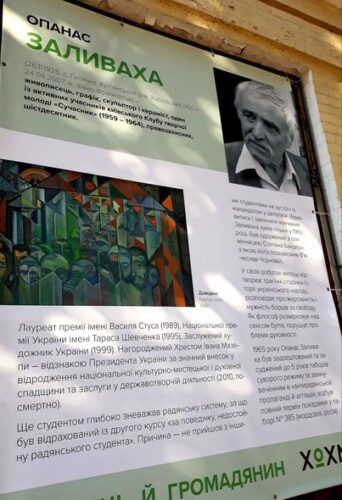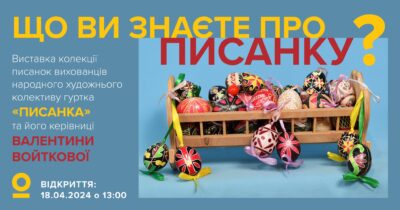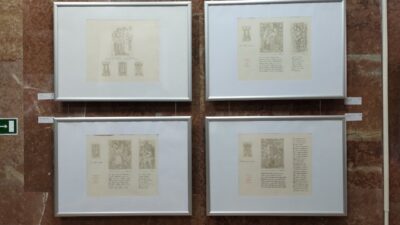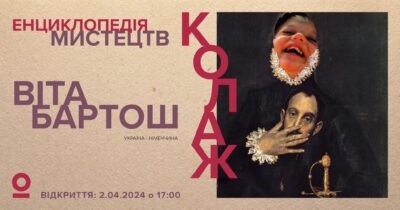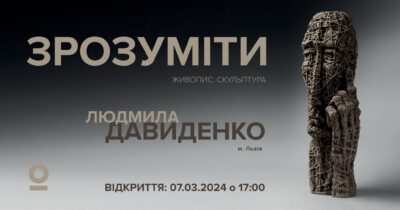Oleksandr Murashko (7.09.1875, Kyiv – 14.06.1919, Kyiv) was a Ukrainian painter, teacher, and public figure.
He was a master of psychological portraiture, the founder of the new national painting of the XX century, who was one of the first in Ukrainian painting to search for new expressiveness and experimentalism. The painting “Carousel” (1906), which was exhibited at the Munich International Exhibition, received a Gold Medal. The artist’s works enjoyed constant success in Europe, they were noted by art critics and published in magazines.
The artist dreamed of turning Kyiv into a major artistic center similar to Munich and opening an Academy of Arts in it. He devoted a lot of energy to the education of young artists: in 1909-1912 he taught at the Kyiv Art School, in 1913 he opened his own studio, where, in addition to drawing and painting, he gave lectures on the history and philosophy of art.
During the short period of the Ukrainian People’s Republic (1917-1921), Oleksandr Murashko’s long-held dream came true. In 1917, he became one of the active organizers of the Ukrainian Academy of Arts in Kyiv, where he headed one of the painting workshops.
Full of new ideas, plans, and creative plans, Oleksandr Murashko was murdered in 1919 by Cheka agents near his home with a shot to the back of the head.
Volodymyr Hagenmeister (30.06.1887, Vyborg, Russian Empire – 20.01.1938, Zhovtnevyi Palace, Kyiv) was a Ukrainian painter, graphic artist, illustrator, teacher, art historian, ethnographer, and publisher.
At birth, he was given the name Karl-Richard in the noble family of military official Eduard-Jan Hagenmeister. The family had Estonian, German, and Polish roots. In 1892, his father converted to Orthodoxy and was named Mykola, and his four-year-old son was named Volodymyr.
From 1916 to 1933, he headed the art and industrial school in Kamianets-Podilskyi. He taught composition, graphics, and the history of world applied art. Although he was not an ethnic Ukrainian, he learned the language and in 1922 switched to teaching in Ukrainian. At the school, he organized a lithography workshop that operated from 1921 to 1931. He studied traditional folk art and taught art history at Kamianets-Podilskyi University. The artist’s creative work was aimed at popularizing and developing Ukrainian traditional art and crafts. In 1933, he was removed from the directorate, his art school was destroyed – “for excessive popularization of Ukrainian art”.
He was arrested by Stalin’s NKVD on the night of December 11-12, 1937, on charges of spying for Poland and participating in a Ukrainian nationalist organization. He was sentenced to death. He was executed on January 20, 1938. He was rehabilitated in 1971.
Opanas Zalyvakha (26.11.1925, Husynka village, Kupiansk district, Kharkiv region – 24.04.2007, Ivano-Frankivsk) was a painter, graphic artist, sculptor and ceramist, one of the active members of the Kyiv Club of Creative Youth “Contemporary” (1959-1964), human rights activist, and sixties activist.
Winner of the Vasyl Stus Prize (1989), the Taras Shevchenko National Prize of Ukraine (1995). Honored Artist of Ukraine (1999). He was awarded the Ivan Mazepa Cross, a distinction of the President of Ukraine for his significant contribution to the revival of the national cultural, artistic, and spiritual heritage and merits in state-building activities (2010, posthumously).
As a student, he deeply despised the Soviet system, for which he was expelled from the second year of his studies “for behavior unworthy of a Soviet student.” The reason was that he did not come with other students to a meeting with a parliamentary candidate. Zalyvakha managed to resume and finish his studies only in 1960. He was married to Stepan Bandera’s niece, whom he was introduced to by Viacheslav Chornovil.
In his works, the artist recreates the tragic pages of the history of the Ukrainian people, tells about the sacrifice and courage of the fighters for freedom. As a philosopher, he reflects on the meaning of life and raises issues of spirituality.
In 1965, Opanas Zalyvakha was arrested and sentenced to 5 years in a strict regime camp on charges of “anti-Soviet propaganda and agitation” and served his full sentence in camp #385 (Mordovia, Russia).
Alla Horska (18.09.1929, Yalta – 28.11.1970, Vasylkiv, Kyiv region) was a monumentalist artist, public figure, human rights activist, one of the founders of the Sixties movement in Ukraine and organizers of the Kyiv Club of Creative Youth “Contemporary” (1959-1964).
She was the wife of the prominent Ukrainian artist Viktor Zaretskyi (1925-1990). Since 1962, she participated in the dissident movement. In 1962-1963, together with the poet Vasyl Symonenko and the film director Les Taniuk, she discovered the burial places of Ukrainian citizens at the Lukianivske cemetery in Kyiv and in the village of Bykivnia, Kyiv region, who were shot by the NKVD during Stalin’s repressions.
The theme of the struggle against totalitarianism and Russification of Ukraine was embodied, in particular, in the stained-glass window “Shevchenko. The Mother” (1964, co-authored with Opanas Zalyvakha, Liudmyla Semykina, Halyna Sevruk, and Halyna Zubchenko), for which the artist was persecuted: the stained glass window, created in the Red Building of Kyiv University to mark the 150th anniversary of Taras Shevchenko’s birth, was destroyed by the administration as “ideologically hostile,” and the authors were expelled from creative unions.
Since 1965, she opposed the mass arrests of Ukrainian intellectuals; she signed a number of statements and letters of protest to the leadership of the CPSU and the Soviet government. Administrative repressions began against Horska. Horska’s conflict with the authorities of the time ended with the brutal murder of the artist under still unclear circumstances.
Petro Honchar (30.06.1949, Lipianka village, Shpolyansky district, Cherkasy region) is a monumentalist artist, painter, museum expert, ethnographer, director general of the National Center of Folk Culture “Ivan Honchar Museum”, Honored Artist of Ukraine.
He is the nephew and adopted son of the People’s Artist of Ukraine, Honored Artist, sculptor, founder of the Ivan Makarovych Honchar House Museum of Ukrainian Antiquities (1911-1993), who had a significant influence on the formation of the worldview of the Ukrainian Sixties. Petro Honchar took up his father’s work of preserving and popularizing the artistic treasures of the Ukrainian people and has been continuing it with dignity throughout his life. As a result, the unique Ivan Honchar Museum works, develops, implements new projects, publishes scientific works, and in 1999 acquired the status of the Ukrainian Center of Folk Culture “Ivan Honchar Museum”, and in 2009 became the National Museum.
In his artworks, Petro Honchar depicts the lives of ordinary people in their hard work and leisure time, introducing the viewer to Ukrainian folk rituals and traditions, wedding ceremonies, and holidays. The artist does not formally recreate the life of an ordinary person, but tries to reflect the eternal mystery of existence.
Serhiy Zakharov (27.02.1967, Donetsk) is an artist, art performer, activist.
He studied at the Donetsk Art School, the Slavic Institute of Business and Law (Donetsk), and the Makiivka Engineering and Construction Institute, Faculty of Architecture.
Serhiy Zakharov’s name became known both in Ukraine and abroad in 2014 at the beginning of the war with Russia in Donbas. At that time, Ukrainian and international media wrote about the Ukrainian artist who used street art to protest against the occupation of Donetsk. The images of the occupier Girkin shooting himself in the head with the inscription “Just do it!”, the terrorist “Motorola” in the form of a devil and his demonic bride, which the artist placed in occupied Donetsk in the places of deployment of the invading militants, went around the world. For his patriotic graffiti, the artist was imprisoned for a month and a half in the basements of the so-called “DPR”, where he was interrogated and tortured and a mock execution was staged.
Now Serhii Zakharov lives and works in Kyiv, and is actively involved in projects for the rehabilitation of former political prisoners, prisoners of war, and war veterans. His paintings on the Russian-Ukrainian war are currently exhibited in well-known European galleries and are kept in museums in Ukraine.
